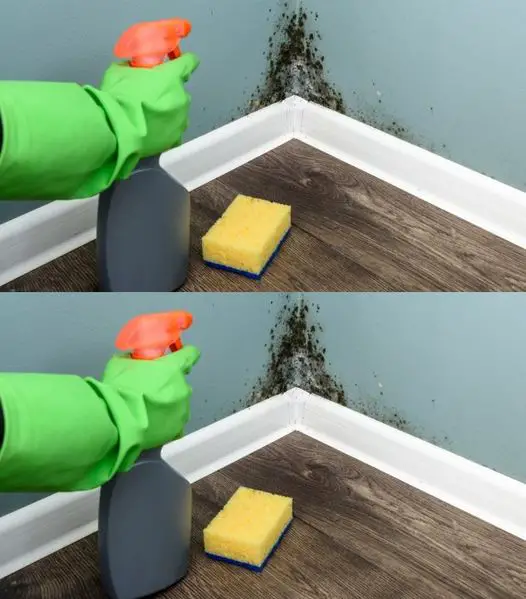Mould growth on interior walls is a common issue that poses significant health risks, including respiratory problems, allergic reactions, and even depression. Addressing this problem promptly is essential for maintaining a healthy living environment. Fortunately, there are efficient methods to remove mould and moisture from walls using natural, non-toxic solutions.
Understanding the Causes of Mould Growth
Mould thrives in environments with excessive moisture and poor ventilation. Common causes include:
- Condensation: Often occurs in areas where warm, moist air meets cold surfaces, leading to water accumulation on walls.
- Leaks: Plumbing issues or roof leaks can introduce moisture into wall cavities, creating ideal conditions for mould.
- High Humidity: Regions with high humidity levels can experience persistent dampness, promoting mould proliferation.
Identifying and mitigating these sources of moisture are crucial steps in preventing mould recurrence.
Natural Methods for Mould Removal
Utilizing natural cleaning agents can effectively eradicate mould without introducing harmful chemicals into your home.
White Vinegar
White vinegar possesses antibacterial properties that make it effective against mould.
Steps:
- Preparation: Pour undiluted white vinegar into a spray bottle.
- Application: Generously spray the vinegar directly onto the mouldy areas of the wall.
- Dwell Time: Allow the vinegar to sit for at least an hour to penetrate and kill the mould spores.
- Cleaning: Wipe the area with a clean cloth dampened with water to remove the mould residue.
- Drying: Ensure the wall is thoroughly dried to prevent future mould growth.
This method can be repeated as necessary until the mould is completely eliminated.
Baking Soda Solution
Baking soda is a natural disinfectant and deodorizer that can combat mould effectively.
Steps:
- Preparation: Mix one-quarter teaspoon of baking soda with two cups of water in a spray bottle.
- Application: Shake the bottle to dissolve the baking soda, then spray the solution onto the mouldy surface.
- Scrubbing: Use a brush to scrub the area, helping to dislodge mould particles.
- Rinsing: Wipe the surface with a damp cloth to remove any residue.
- Preventative Measure: Optionally, spray a light layer of the solution onto the area and let it dry to prevent future mould growth.
This gentle approach is suitable for delicate surfaces and can be used in conjunction with vinegar treatment for stubborn mould infestations.
Preventative Measures
After removing the mould, implementing preventative strategies is essential to inhibit its return.
- Enhance Ventilation: Regularly open windows and use exhaust fans in high-moisture areas like kitchens and bathrooms to reduce humidity levels.
- Control Indoor Humidity: Maintain indoor humidity between 40-60% using dehumidifiers if necessary.
- Address Leaks Promptly: Repair any plumbing or roof leaks immediately to prevent moisture accumulation.
- Use Mould-Resistant Products: Consider using mould-resistant paint and materials in areas prone to dampness.
Consistent application of these measures will help maintain a mould-free environment.
Conclusion
Effectively removing mould from walls doesn’t require harsh chemicals. Natural solutions like white vinegar and baking soda offer safe and efficient alternatives. By addressing the root causes of moisture and implementing preventative strategies, you can maintain a healthy, mould-free home.

